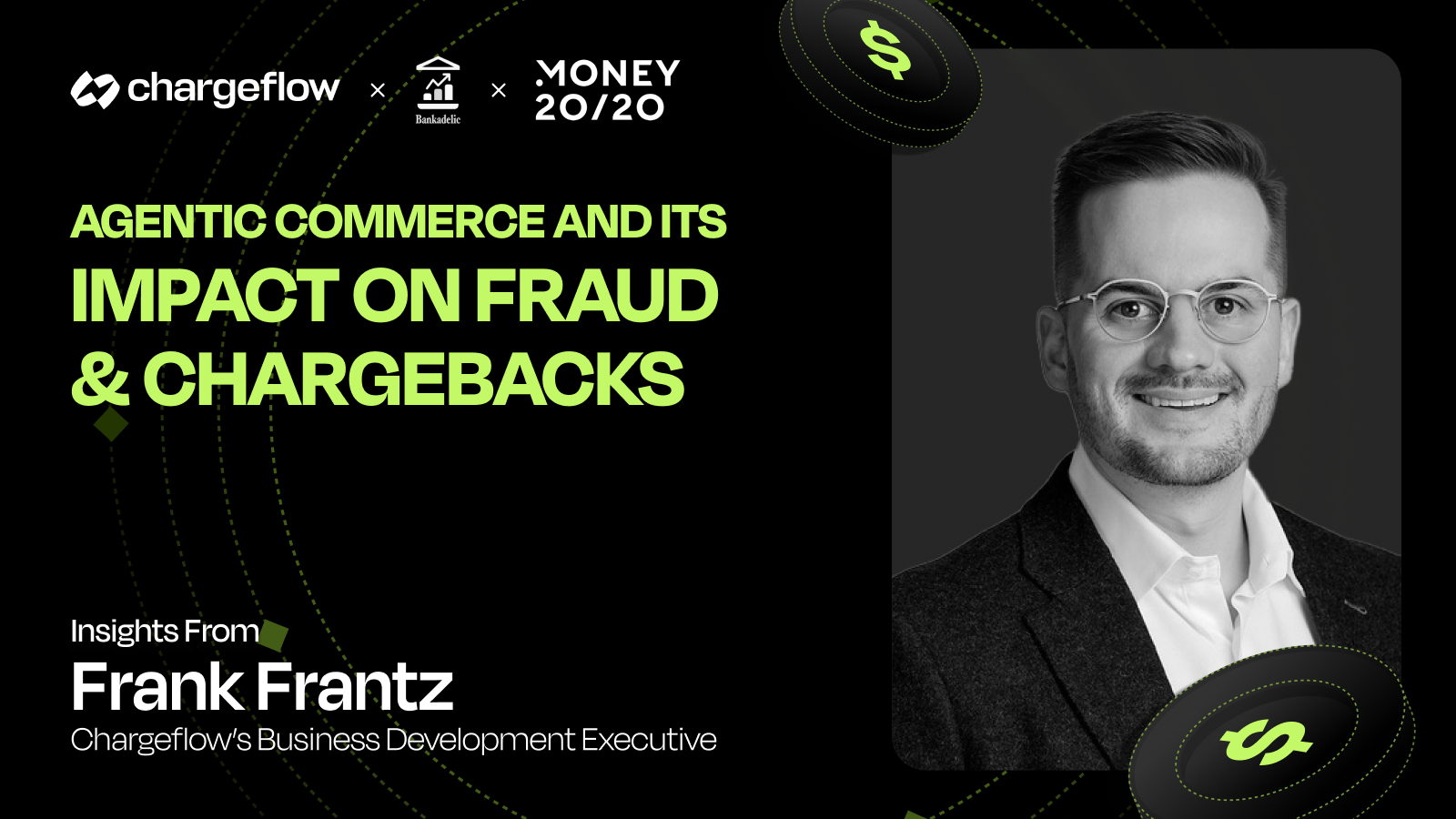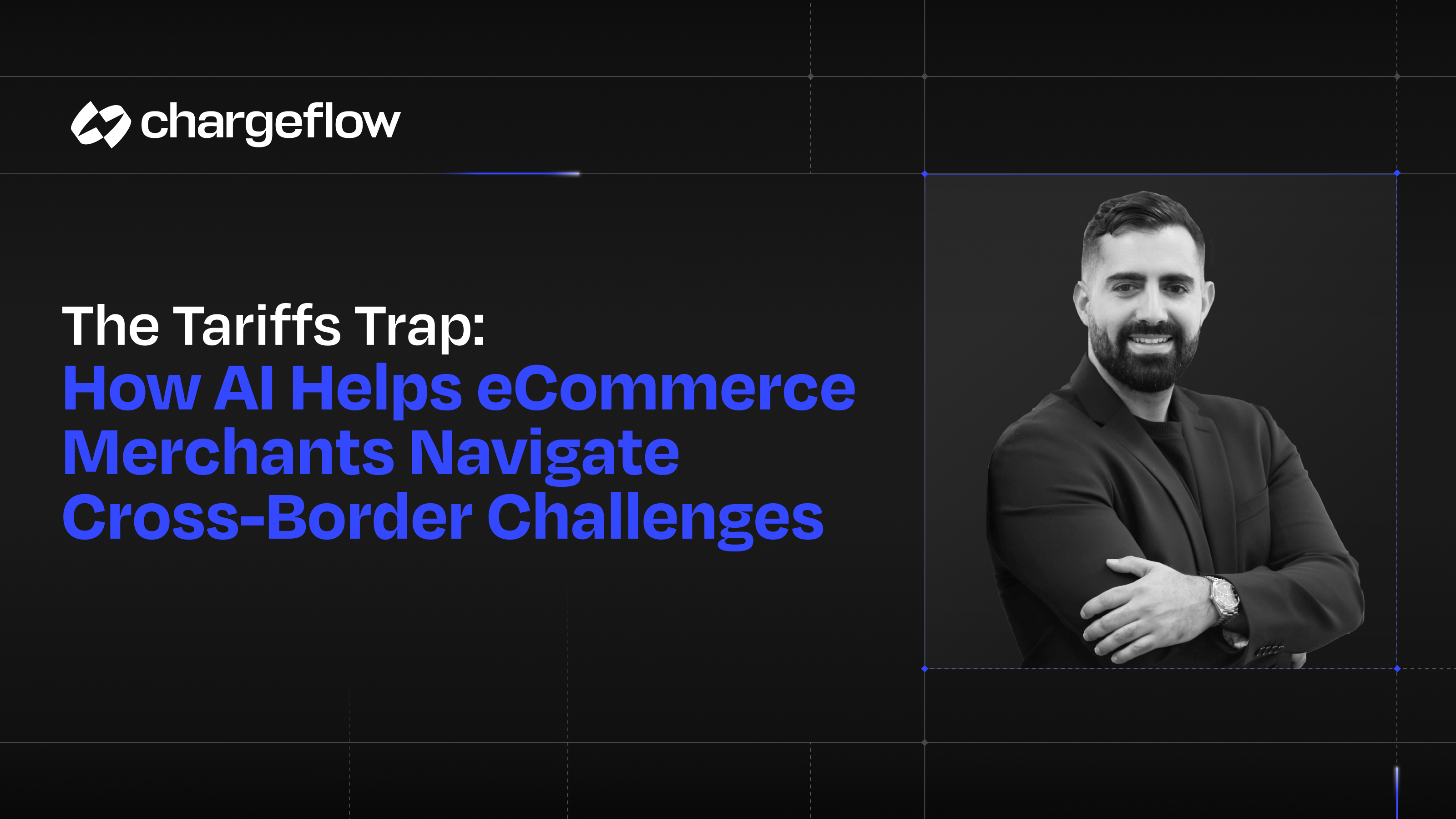How to Reduce Your Chargeback Ratio in 7 Simple Steps

Chargebacks?
No longer your problem.
Recover 4x more chargebacks and prevent up to 90% of incoming ones, powered by AI and a global network of 15,000 merchants.
Chargeback ratio equals the number of chargebacks a merchant received in a given month divided by the total number of transactions processed that month.
In the world of payment disputes, chargeback ratio is probably the determinant factor for the success or failure of online businesses.
If you don’t understand what it is – if you don’t know your chargeback ratio or how reducing your chargeback ratio fuses into your KPI decisioning, you’re putting your company in a deeply unlucky position.
What is a chargeback ratio?
The chargeback ratio, which some people call “chargeback-to-transaction ratio” or chargeback rate, measures your chargebacks as a proportion of total sales in a given month.
To know your chargeback ratio, you divide the total chargebacks you received by the total number of sales within the period in focus.
Although that equation is pretty straightforward, total chargebcks divided total sales processed, confusion arises when you have to derive the data source for the math. The card networks have different metrics for their calculation.
For example, Visa, AmEx, and Discover derive your chargeback ratio using the number of chargebacks you got in the present month divided by the number of sales you processed in the same month.
But MasterCard doesn’t go that route. For them, your chargeback ratio is the outcome of the number of chargebacks you received in the month in focus divided by the number of sales processed in the past month.
Although the difference might seem negligible, it’s not. What’s an acceptable ratio in one network could be a significant problem for another brand, as each card brand considers only the transactions done on its network.
And, as you might have reckoned, a high chargeback ratio means heavy fines, excessive processing fees, and eventual loss of processing privileges in extreme cases.

How to Reduce Your Chargeback Ratio in 7 Simple Steps
While it’s impossible to eliminate chargebacks -- as scammers now use chargebacks to steal from online businesses -- you must do all you can to limit exposure.
Achieving that objective requires that your customers receive their orders promptly, are satisfied with your shipment, and can quickly reach you when they have any issues.
Unfortunately, that’s easier said than done with today’s complex and evolving eCommerce realities.
Below are seven essential recommendations to help you refine every aspect of your business operations and construct a perfect customer experience that successfully delivers on set goals.
#1: Optimize Internal Processes to Avoid Merchant Error
It’s true; most chargebacks are meritless.
Yet, research shows that avoidable merchant errors cause about 20-40% of all chargebacks issued.
If you don’t optimize your processes to circumvent these missteps, you might be fighting a losing battle when a cardholder files a dispute.
Is your bookkeeping standardized to prevent clerical errors such as double billing during peak seasons?
Have you established optimum QA protocols to ensure an accurate, accessible filing system for receipts and other pertinent transaction records?
These things are crucial.
Review your internal systems and all customer touchpoints and plug any leakage that might cost you money or result in lost sales.
Here's a pro tip: Use chargeback alerts to stay ahead of the dispute curve.
#2: Use Anti-fraud Tools and Pre-auth to Circumvent Fraud
Every processor is keen on ensuring your chargeback ratio gets to the lowest possible percentage.
Finding out how they can help you achieve that aim is an excellent starting point in reducing your chargeback rate.
But aside from that, you must also do additional due diligence. Beyond using AVS to check if the cardholder’s billing address matches the address on file with the bank, you can equally use Card Security codes to ensure the buyer has a payment card on them. Other anti-fraud tools include 3-D Secure and automated response systems, which can also provide extra fraud protection layers for your business.
Additionally, applying credit card authorization hold can limit your exposure to digital fraud, MDRs, and chargebacks.
It provides a form of insurance for services delivered.
For example, suppose a customer makes a purchase and then drives to a nearby ATM to empty his account. With credit card pre-auths, you can construct the process to ensure the transaction funds stay intact until they settle their account or the time limit runs out.
#3: Pre-empt Friendly Fraud with Clear Billing Descriptors
One of the reasons for unintentional friendly fraud is when a cardholder does not recognize a bill on their statement.
For instance, if a cardholder receives a bill alert but couldn’t recognize the business’ name, they might think someone has made an unauthorized transaction. And their recourse would be to file a chargeback.
A precise billing descriptor puts a name to your company on a cardholder’s payment statement.
Aside from your business name, your billing descriptor should include your website and business phone number.
It’s valuable to highlight that there are two parts to the billing descriptor: The soft descriptor and the hard descriptor.
The former remains on the account for roughly 72 hours as the transaction goes through authorization. And the latter stays on the card billing statement as soon as the transaction goes through.
Pay attention to the content of these tools and craft your statement so that they won't be the source of trouble.
.jpeg)
#4: Be Responsive and Helpful
Customer communication is by far one of the vital aspects of every business.
Advice such as “answer the phone, respond to emails and social media DMs and comments, let customers know what’s going on with their order” might seem a bit redundant. You've heard that a million times.
So why don’t many businesses do it?
Actual data shows us businesses that invest in excellent customer service reap significant benefits, with 73 percent of business leaders reporting a direct link between their customer service and business performance, according to Zendesk.
There’s more. 74% of the survey respondents say they are willing to forgive a company for its mistake after receiving an excellent service to rectify the error.
Here’s how to handle customer complaints online:
- Make them feel heard.
Publicly acknowledge the message. It's essential to publicly respond to the feedback to make the customer feel heard.
Then move the conversation to a more private channel on that network. For example, if a customer sent a tweet, reply to the tweet by apologizing and letting them know you'll make things right.
Then ask them to send you a D.M. for further assistance. That will limit further public backlash.
- Keep the conversation on the same network.
Ensure the discussion stays on the same network they reached out to you unless you had to escalate it to a call or email. And do your best to follow through with a solution.
#5: Manage shipping expectations
It’s not improbable for consumers to initiate a chargeback if they suspect their order got lost in the shipping process.
To alleviate such tension, ensure your buyers have concrete order details, such as:
- The shipping carrier used;
- Confirmation and tracking details, with links for seamless shipment tracking updates;
- Feasible delivery timeless, factoring in any delays due to bad weather or unusual sales volumes;
- Contact details for further instructions in case of shipment delays.
Those pertinent details arm the customer and guide them on how to seek remediation for shipment issues. You will also be sure their only alternative is to file a chargeback.
Again, while you can aspire to amaze your buyers with fast shipping, if you don’t have the Amazon bandwidth for overnight delivery, manage your buyers' expectations accordingly.
I must also add that you should always collect proof of delivery to show the order got to the rightful owner.
#6: Ensure your Return and Refund Policy is Flexible Enough
Another source of headache for customers is the return and refund process.
Many buyers choose to file a chargeback instead of going through the difficulty of returning an item or requesting a refund.
And, for the sake of full disclosure, if your return and refund policy makes it easy for your customers to talk to their bank before they talk to you, you should rethink your strategy.
The goal of such a policy is to encourage your buyers to use the right channels for returning any product they don’t want. And to not run to their bank anytime they face an order challenge–which is why you need a clear, low-lift, and accommodating policy.
Plus, you must make it easy for your customers to readily access that instrument.
Another source of headache for customers is the return and refund process.
Many buyers file a chargeback instead of going through the difficulty of returning an item or requesting a refund.
If your return and refund policy makes it easy for your customers to talk to their bank before they talk to you, you should rethink your strategy.
The goal of such a return and refund policy is to encourage your buyers to use the suitable channels for returning any product they don’t want. And to not run to their bank anytime they face an order challenge. That's why you need a straightforward, low-lift, and accommodating policy.
Plus, it should be easy for your customers to access that instrument.
Granted, creating a flexible order return process might open up a revenue loophole, where scammers can misuse such privileges with return fraud. But merging the points listed above with Chargeflow’s automated chargeback solution helps ensure you can spot crimes before they happen.
Moreover, a flexible policy is also good for business, as over 60% of customers review a returns policy before making their purchasing decision, according to TrueShip.
#7: If It’s Free Trial, Let it Be Free
Subscription billing is a great business model that guarantees cash flow on autopilot.
While the set-it-and-forget-it strategy works for both parties involved, they're not without downsides. Automatic billing often results in unwarranted chargebacks when there’s no transparency.
If you offer free trial subscription billings, consider notifying the cardholder before the free trial periods end.
Although sending these alerts might increase the risk of subscribers dropping off your program, the greater good overshadows the immediate revenue boost. When you factor in the cost of chargebacks and the eventual revenue drain resulting from a high chargeback ratio, the quick gratification pales in comparison.
Again, if buyers have to pay for shipping or access your digital product tell them in advance. Using an incremental billing strategy that hides actual costs might attract the cardholder, but as the bills keep piling up, they'll surely get overwhelmed and seek an outing option.
In a nutshell, let buyers know:
- exactly what they’re agreeing to;
- how long the trial period will last;
- how and when to cancel if they don’t wish to continue with a full subscription when the trial period ends.
Do you want to level up your dispute mitigating game and recover chargebacks by autopilot? Chargeflow offers expertise, tools, strategies and full accountability to help you control, fight, and recover chargebacks effectively. With our success-based pricing, you can be sure that you only pay when you win.

Chargebacks?
No longer your problem.
Recover 4x more chargebacks and prevent up to 90% of incoming ones, powered by AI and a global network of 15,000 merchants.






























.png)








